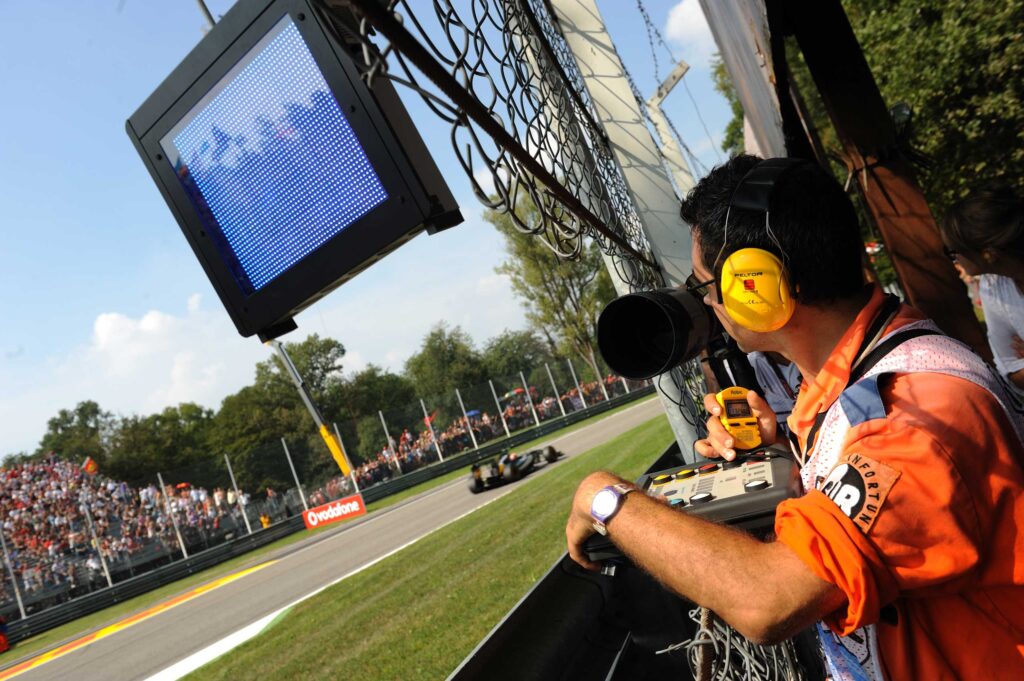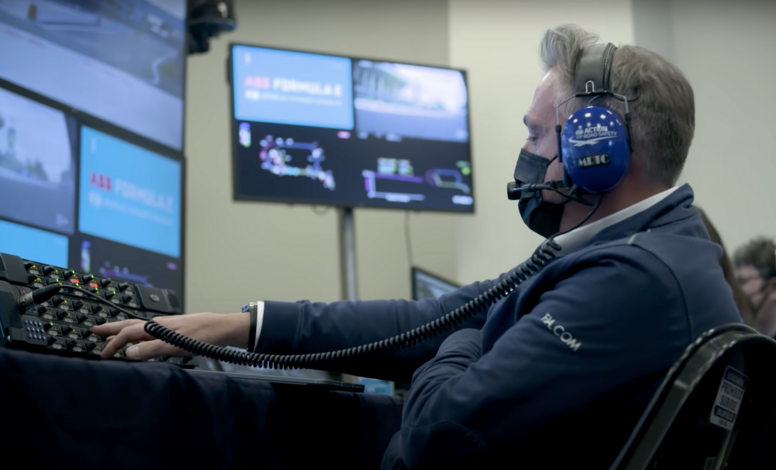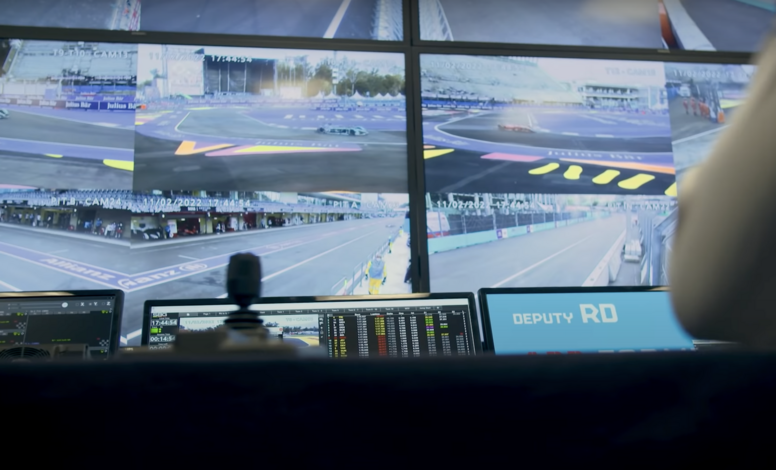The Benefits RaceWatch Software Can Bring to Club Circuits
When enjoying a race either at a track or on the TV, we often forget that there is an entire team in Race Control, working tirelessly behind the scenes to ensure the smooth operation of the race weekend.
Unsurprisingly, this is not an easy job. Race Control is responsible for supervising every session on track, ensuring that the technical and sporting regulations are met, the timetable followed and that all competitors and spectators remain safe.
To achieve this, Race Control rely on a multitude of systems including live timing data, team radio, onboard video and circuit cameras. These all need to be effectively integrated together to provide accurate and instant information to the stewards; helping them to make more consistent decisions, faster.
The challenge for club circuits
However, unlike the bigger championships such as Formula 1, where there are typically 30 stewards analysing hundreds of data streams, club circuits have to cope with the same workload, but with one-third of the people and half the budget.

‘Club circuits have such limited resources that they have to run as lean as possible,’ says Stephen Taylor, Senior Product Manager at SBG, a Catapult Company. ‘This means that everyone in Race Control is doing the work of two or three people during a race weekend.
To cope with this, it’s actually more important that club circuits have fully integrated and efficient track support systems because they simply don’t have the time to wait for data or to deal with systematic errors.’
How RaceWatch can support Race Control
SBG, a Catapult Company, have worked with several club circuits to develop RaceWatch MS (Marshalling System) and RaceWatch ID (Incident Detection) software. RaceWatch MS is used for the live control of track activity during a session. It connects to timing software, telemetry, GPS, video sources and marshalling flag panel systems to send Race Control messages to competitors via marshalling flag panels and on-board LED displays.
‘It allows for more granular control of flag panels which can be particularly useful when several classes are racing at the same time,’ highlights Taylor. ‘The relative performance between two different classes can be used to calculate a blue flag tolerance which can be configured into the software.
This means that when a faster class of car comes up behind a much slower car, the blue flag signal automatically triggers earlier, giving the car in front plenty of warning that a faster car is approaching; reducing the risk of a crash.

RaceWatch ID uses the same inputs as RaceWatch MS but uses these data streams to detect potential incidents and then review these incidents as well. Intelligent data analysis and camera selection creates automatic alerts that give instant access to the video of race incidents, while switch track cameras automatically follow a single car around the track.
Potential incidents are bookmarked and can be easily referred to the stewards with a single click. This helps to speed up the response of the stewards, reducing the time to review from minutes to seconds, helping to avoid those unpopular post-race penalties.
‘If there is an incident on track, such as a collision between two cars, we can have an automated alert to say, ‘this incident happened here’,’ highlights Taylor. ‘We can identify who it is and where it is straightaway, note the timestamp and automatically pull relevant video, either from trackside cameras or streamed onboard systems, into a single incident package in a matter of seconds which is then ready to be reviewed by officials.’

Improving the efficiency of Race Control
RaceWatchMS and RaceWacthID are not only useful during race weekends, but can be utilised during track days during the week too. ‘Running a circuit and making a profit is an incredibly difficult task,’ says Taylor. ‘Tools like RaceWatch that bring together video and data to automate alerts can really help improve the efficiency of operating a circuit at both race weekends and track days. This can help lower the workload on individuals and in some cases, even reduce the number of stewards required in the first place, saving the circuit money.’
Furthermore, implementing RaceWatch streamlines the multitude of different stand alone systems that are required to operate a race track, again saving hassle, time and money. Each circuit will typically have a video monitoring system, a permanent timing installation (which is often not owned by the circuit itself and therefore requires a fee), track limit sensors and digital flag panels.
‘RaceWatch easily integrates with all the different timing systems and digital flag panel providers that are out there,’ says Taylor. ‘We can bring the management of all these independent systems into one centralised control for efficient sporting governance and race management at race events. But there’s also the opportunity to generate additional revenue on a day-to-day basis for circuits using this kind of platform.’
Boosting track day revenue
The integration of video, timing and flag panels within RaceWatch can add more value to a track day experience, which not only encourages returning customers but also provides additional services that can be extra revenue generators.
‘We can map a specific car on track and take in CCTV from the cameras around the circuit to create a ‘Follow Me’ camera stream,’ says Taylor. ‘This could then be sold to drivers at an additional fee who want a personalised video of their fastest lap. Another income opportunity is pitstop analysis for professional teams during test days. One pitbox could be set up with overhead cameras and our software can provide a high speed video analysis of a team’s pitstop procedures, which they pay extra for. These are just some of the additional revenue streams our system can facilitate.’
How circuits are currently benefitting from RaceWatch
RaceWatch is already implemented in Race Control of multiple FIA championships such as Formula 1, WEC, Formula E, WRC as well as SuperGT in Japan. Catapult’s Race Control software is also starting to appear in tier 1 and tier 2 circuits and is permanently installed in four Japanese circuits including Suzuka, Fuji, Matakii and Akiyama.

‘We also have the system installed at the Concours Club in Florida, which is not a competition race track but is a private member’s facility for people to drive their sports cars on a circuit,’ highlights Taylor. ‘There we have a full EM digital flag panel system in conjunction with our software, controlling that along with the timing and video monitoring of the facility. They have the added complication of two concurrent circuit configurations which we can manage individually from within the software.’
‘Overall, whether it is a tier 1 circuit or a private club, a race weekend or a track day, we have developed RaceWatch to help Race Control streamline all the different circuit systems into one centralised hub that allows them to make more accurate decisions faster,’ concludes Taylor. ‘RaceWatch also provides additional revenue streams which could be key to helping circuits capitalise on the current enthusiasm in motorsport and make a profit from track days as well as race weekends.’